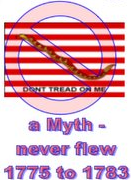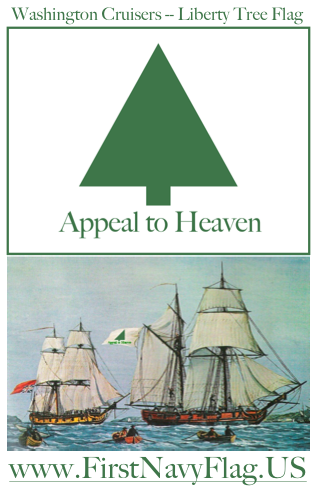Actually email dated 2007 not 2004, just redated it so to put it on the blog, but at the end so other post more designed to the casual reader might be at or near the top of the blog...
Dear Dr. Whitney Smith,
Again thank you for your email from your Flag Research Center earlier today. I am glad to be a member since October and being told of your fine work by Peter Ansoff, president of NAVA, an organization that I see you served as president for a decade before and during our Nation's Bicentennial.
I just added Peter Ansoff to my contact manager program and the program then indexed my past emails to and from him. Here below is one email from him dated 14 May 2006 where Mr. Ansoff first mentioned your Flag Bulletin article about an existing tree flag.
In his 2004 Raven article on page 20 he credits your scholarly insight with the following quotation:
"…Original research is time-consuming and demanding and it's easy to assume that published sources are correct and can be trusted."
That is why I am devoting my time into this demanding work because you have the reputation of a flag expert. While some non-scholars might call such time-consuming and demanding research evidence of "obsession", truth is a value to be upheld, like we hold up a flag we honor.
The quote from you by Ansoff in his article continued:
"Those who have written books and articles or have created web sites about American flags have for the most part relied on work done by Preble. As a result there is a constant repetition of misinformation that gives certain designs the impression of accuracy."
I am working hard to end the repetition of misinformation, and in a collegial manner with you and others approach accuracy as best as the existing facts along with "educated guesses" may allow. As a former Navy cryptologist, I like facts, but also accept the necessity to "the mission" of projection of designs from fact patterns and related applicable information.
The maxim is "Don't let the perfect be the enemy of the good." While absolute assurance of the one design is improbable if not impossible because different ships may have had slightly differing shapes of the components of the approved flag design, an "educated guess" is quite reasonable.
Last year I communicated with David Martucci who lives in Washington, Maine and served as President of NAVA from 1998 to 2004, and he indicated that Preble tried to correct his error on the Snake flag between his 1872 book and his 1880 book. However, Mr. Ansoff below indicates that may have been only one multi-colored stripe design of the several Snake on Stripe flag designs.
This related solely to the red and blue striped version of the rattlesnake flag, not to the "First Navy Jack" story per se. I've done some further research since the article was published, and I believe I've found the source that Preble was actually referring to. It was in a history of Philadelphia that was published in the mid 19th century.
I am trying to work with you to minimize the misinformation pertaining to the Washington Cruiser Flag as may be best to describe the flag to differentiate it from the Massachusetts Navy flag, and establish some design particulars.
After Mr. Ansoff was in his new home and I wrote to him again this past 2 September 2007, to which he responded the very next day and he again mentioned your Flag Bulletin and the specific issue number #206. I then contacted you in late October to purchase the Flag Bulletin #206. I read your Flag Bulletin several times before I wrote to you for clarifications.
> Do you know of any existing real or realistic copies of the "Bunker Hill" or Continental Flag in museum or personal collections?A flag similar to the purported "Bunker Hill" flag was found in private hands in New York a couple of years ago -- there was an article about it in "Flag Bulletin." As I recall, it was believed to be a militia color from the 17th or early 18th century. The "tree" in the canton was just a simple triangle, without any trunk or branches. Again, my reference is packed up so I can't verify the details at the moment.
In the illustration of that flag in the article on page 149, it shows a simple trunk in addition to the triangle for the tree. The photograph of the flag on page 143 is hard to discern, I believe I see a triangle AND a trunk, though I am not sure. Do you have a email address for Gary Laube to verify?
The new fact that had otherwise only presumed was on page 143 third paragraph, "...contained a small green wool triangle resembling a pine tree". The letter of Colonel Joseph Reed obtained from the Library of Congress does not mention the color or the shape of the tree he mentions. One would logically presume a green piece of fabric to represent a tree.
On the color page on page 144 are shown ten flags, five flags with a tree upon them, four in the canton, one on a white flag. One flag, J, is not mentioned in the article text on page 145. Yet there are four branches on either side of the centerline of each tree on page 144, and what appears as a patch of grass at the base of the trunk of the tree, NOT a simple triangle for the tree and a simple trunk as the illustrator reproducing the original Southhold flag shows on page 149.
On the inside front cover (page 126?) is written "Artwork for this issue, courtesy Terri Malgieri". Does the artist have some additional scholarly source for the eight branched tree, four on each side, as illustrated on page 144, or for the different design on the cover a MUCH more elaborate tree with 12 branches, six on either side of the centerline, with dozens of nearly individual leaves depicted, versus the simple triangle tree described, photographed, and illustrated in the article of Flag Bulletin #206?
While the elaborate trees are impressive for illustration in a modern magazine, again I think logically and say,
"Consider. You are a flag maker 222 years ago. You have to hand-stitch the "tree" onto the flag" (not silk screen a design on the fabric or print on paper). "A simple triangle is VERY MUCH MORE easy to stitch on the flag than these other elaborate designs. A simple triangle shaped tree would convey the concept, take less time, less thread, and be far more likely to withstand the stress of the flag flapping in the winds that a Navy flag would experience..."
Grammar causes questions in the last two paragraphs on page 145 of Flag Bulletin #206.
(1) First is written "The pine tree... was a natural choice in 1776 when Massachusetts-Bay sough an official ensign for its Navy." Time wise that is a correct statement for Massachusetts did, in 1776, adopt the simple tree flag, or pine tree flag, as its Navy Ensign, after the autumn of 1775 adoption of a similar but not the same flag design.
(1.a) Confusing or in error is the next sentence about "George Washington's secretary, Colonel Joseph Reed, proposed the same ensign for the Continental Navy." Time wise Colonel Reed proposed a similar flag on 20 October 1775, months before Massachusetts adopted a similar tree flag.
(1.b) However there was a significant design difference between the Washington's aide Colonel Reed proposed design that included the motto "Appeal to Heaven", and the Massachusetts Navy flag which to the best of my knowledge from reading, did not include the motto.
(1.c) Is there any design information as to the shape of the tree in the Massachusetts Provincial Congress records (or the exclusion of the motto) on the Massachusetts Navy flag as was used on the flag flown by the Continental Navy ships commissioned by Commander in Chief Washington?
(2) The Flag Bulletin article on page 145 continues: "While that idea was never approved, it may have appeared in an American ensign displayed by John Paul Jones."
That sentence creates two issues, a concerns and a question:
(2.a) First, the 6 January 1776 letter by Admiral Hugh Palliser describing the Continental Navy ship Washington ensign captured when the ship went aground and was captured by the British confirms the design described by the 20 October 1775 Colonel Joseph Reed letter was "approved" by its use on American Continental Navy ships.
(2.b) Second, what is the citation for John Paul Jones flying a tree flag? I have read that he raised the first "Grand Union" flag of the Union Jack as a canton on the Sons of Liberty red and white stripes flag.
(3) The next paragraph states: "A flag of 13 white, blue, and red stripes with a white canton bearing a green pine tree appears in a circa 1776 painting of his personal arms."
(3.a.) Who is meant by "his"? Does "his" in "his personal arms" refer to John Paul Jones, or Colonel Joseph Reed?
(3.b) Where is the 'circa 1776 painting' and what is its provenance, or to say, is the artist much more reliable than English artist Thomas Hart?
(4) The next to final sentence on that page states: "As an ensign that flag (cover) would have been paired with the Pine Tree Flag (I) as a jack." [Referring to page 144, illustration I. ]
(4.a) The design of the tree on the cover and the design of the tree on page 144, illustration I are not the same.
(4.b) The pairing between the flag and the Navy jack would be the flag in page 144, illustration J with illustration I.
(4.c) While illustration J is not mentioned in the article, some claim it was used at Bunker Hill, or Continental Flag, and so called the Bunker Hill flag. Do you have any basis to support or refute that notion or legend, other than the later painting by Trumbull?
(5) The final sentence states: "It might have been used as an alternative to the Continental Colors, although there is no evidence of such usage."
(5.a) The Navy jack flag would derive naturally from the Continental Flag (or Bunker Hill Flag) if such existed. The terms Continental Flag and Continental Colors seem to be one and the same.
(5.b) However, when the Grand Union flag was hoisted, with its canton being the same as the British Union Jack a problem was created for the Continental Navy because the Navy has the tradition of using the canton of the national colors as its Navy Jack. Is that your understanding of Navy Jack flag tradition?
(5.c) Based on Admiral Palliser's 6 January 1776 letter, with the modified with motto Continental Flag canton on the Continental Navy ship Washington, there is "evidence of such usage".
Working together we can overcome misinformation, and seek a studied version of accuracy in the design of an important flag in American History.
A closing question given that you were President of NAVA for the years prior to the Bicentennial years of 1975 and 1976, did any officers from the Secretary of the Navy offices or historians from the Naval Historical Center ever consult you on which flag was an historically accurate Navy flag at the time of the founding of the Continental Navy in October 1775 versus the prevailing legends?
For America's future (building up on our past),
James Renwick Manship
Interpreter of George Washington (in Three Dimensions)
Box 75, Mount Vernon, Virginia 22121
202-657-6760
Quote from 1770, retired Virginia Militia Colonel
George Washington said:
"As our country grows, and its population increases, as it will,
care must be taken to have each succeeding generation know
the trials and tribulations of those who preceded them.
History is an essential study to better government."
Begin forwarded message:
From: "Peter Ansoff" <ansoff@alumni.vanderbilt.edu>Date: May 14, 2006 10:13:24 AM EDTTo: "'James Renwick Manship, Sr.'" <George@WashingtonLIVES.us>Subject: RE: Navy FlagReply-To: <ansoff@alumni.vanderbilt.edu>Dear James,Unfortunately, I don't have access to my notes and reference library right now, because they're all packed in boxes (we're getting ready to move to a new house, after 19 years in this one). I've made some comments on your questions below "off the top of my head" -- sorry that I can't be more definitive.
> Do you know any existing copies of that Liberty Tree flag that flew on any of those water borne vessels? Either in museum or private collection, here or in England?As far as I know, no original example exists, anywhere. The only first-hand illustration is in a British engineering officer's sketch of one of the floating batteries.> What do you make of the "Norfolk Pine" -extended thin branches? Where did that come from?> I see various shapes of the evergreen, or pine tree. Do you have any knowledge as to what shape was most prevalent?The most common 18th-century version seems to have had separate branches that were either horizontal or at about 45 degrees to the trunk. The "Buck flag" is a good example, and others appear on contemporary coins, currency, documents and cartoons. I don't believe I've ever seen an 18th century illustration that looked like the modern "Christmas tree" version.> Do you know of any connection between the Buck Flag, that was reportedly presented to a black regiment by Hancock and Washington?As far as I know, the whole story of the Buck flag is an unattributed legend that first appeared in a 19th century book. The flag itself is at the Massachusetts Historical Society, but I don't believe that they have any information about its origins. The supposed connection with Hancock and Washington stems from the fact that the scroll above the device has the letters "JH" and "GW." If I had to guess, I'd say that the flag probably dates from the early years of Washington's term as president, when Hancock was governor of Massachusetts. The idea might have been to imitate the British practice of putting the royal cypher on regimental colors by displaying the initials of the President and the Governor. That's just pure speculation, of course -- I haven't looked into the story of the "Buck flag" in any detail.> Are there any elements of that Buck flag that derive from Hancock, such as the deer, the colors, the inscription, or its "Linus-type-pitiful" tree?See above. As far as I know, there is no documented connection between Hancock and the flag.> Do you know of any existing real or realistic copies of the "Bunker Hill" or Continental Flag in museum or personal collections?A flag similar to the purported "Bunker Hill" flag was found in private hands in New York a couple of years ago -- there was an article about it in "Flag Bulletin." As I recall, it was believed to be a militia color from the 17th or early 18th century. The "tree" in the canton was just a simple triangle, without any trunk or branches. Again, my reference is packed up so I can't verify the details at the moment. As I mentioned in the last email, the consensus among those who have studied the issue is that the "Bunker Hill" flag was not used after the early 18th century. The term "Continental Flag" is usually used to refer to the Continental Colors -- stripes with the British union in the canton.> I ordered through Inter-Library Loan your Raven article, but never received it. I received a copy and read through it with much interest. Well done.Thank you. It was interesting and fun to research.> Was curious about the indicators that the European artists may have intended to be demeaning with their illustrations of the rattlesnake on its belly.> You did not go too deep on that, how significant do you think that possible intent may be?I didn't really look into that in detail because it wasn't the focus of my research. It would be an interesting topic to pursue. Good references to start with would be Lester Olson's book "Emblems of American Community in the Revolutionary Era," Karen Cook's article on the rattlesnake emblem, and Cresswell's "Drawings and Prints" (the last two are cited in the "First Navy Jack" paper).Do you have any conclusions of how the Admiral Preble 1872 error, and his significant efforts later to correct the error by insistence in the removal of text discussing the flag, but publishers failure to remove the color plate of the Snake flag, contributed to the continuation, or even the extension of the Navy Flag legend?This related solely to the red and blue striped version of the rattlesnake flag, not to the "First Navy Jack" story per se. I've done some further research since the article was published, and I believe I've found the source that Preble was actually referring to. It was in a history of Philadelphia that was published in the mid 19th century.Since the above paper is not published, do you have an email version that I might read to extend my understanding?Right now it doesn't exist in a "digestible" format. Once I get the move behind me, I plan to get busy and prepare it for publication.Best regards,Peter Ansoff










No comments:
Post a Comment